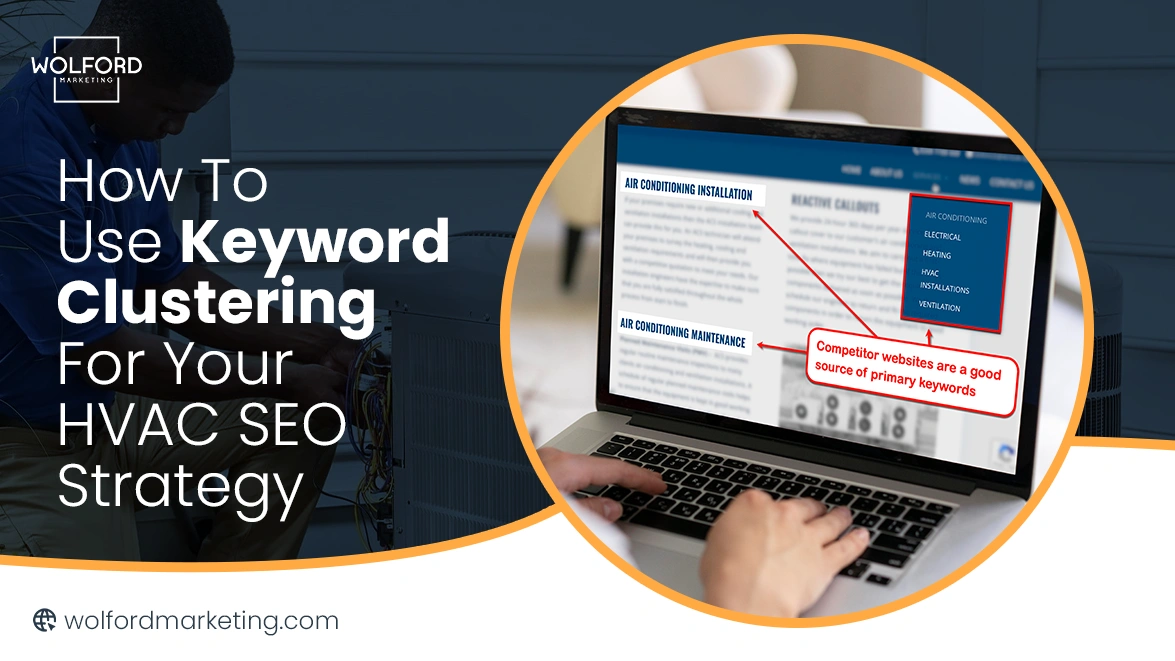Improving your online presence is essential for attracting more HVAC customers. One effective way to improve your SEO and drive traffic to your site is to implement keyword clustering for better reach. This latest technique helps you organize related keywords to boost your rankings on search engines.
To use keyword clustering for your HVAC SEO strategy, start by conducting thorough keyword research, grouping keywords by topic and intent, mapping each cluster to a dedicated page, optimizing each page around its cluster, using internal linking to reinforce relationships, tracking cluster performance, and expanding your clusters over time.
How to make clusters?
Keyword clustering groups related keywords to create more targeted, organized, and effective content. Here is how to make:
Conduct Thorough Keyword Research
Before creating clusters, start with comprehensive keyword research. Use tools like Google Keyword Planner, Ahrefs, or SEMrush to find:
- Core HVAC services (e.g., “air conditioner installation”)
- Related terms (e.g., “central AC install,” “split AC setup”)
- Local modifiers (e.g., “HVAC repair in Dallas”)
Be sure to gather a mix of short-tail and long-tail keywords. Capture metrics like search volume, keyword difficulty, and user intent to prioritize the most valuable terms.
Group Keywords by Topic and Intent
Once you’ve gathered your keywords, begin clustering them into groups based on shared topics or intent. For HVAC businesses, your clusters might include:
- AC Services Cluster: AC repair, air conditioner fix, emergency AC service.
- Heating Services Cluster: furnace repair, heater installation, emergency heating service.
- Maintenance Cluster: HVAC maintenance, seasonal tune-up, annual system check.
- Commercial HVAC Cluster: industrial HVAC service, rooftop unit repair.
Each cluster should represent a specific service or customer need, not just random keywords.
Tips to Use Keyword Clustering for Your HVAC SEO Strategy
For HVAC businesses, clustering ensures that your website ranks for more relevant searches, improves topic authority, and enhances the user experience. Here’s how to use keyword clustering effectively in your HVAC SEO strategy.
1. Map Clusters to Specific Pages or Content Types
Each keyword cluster should typically correspond to a dedicated page or content piece, depending on the overlap and search intent. This approach ensures your content is highly relevant to the user’s query. Examples:
- “AC Repair in Austin” → Local service page
- “How Often Should You Service Your HVAC System?” → Blog post
- “Ductless Mini Split vs Central Air” → Comparison guide
Avoid stuffing multiple clusters onto one page; keep your focus tight.
2. Optimize Each Page Around Its Cluster
Once you create a page for a cluster, optimize it thoroughly for both users and search engines:
- Use the main keyword in the title tag, H1, and meta description.
- Incorporate related keywords throughout the content naturally.
- Address questions or concerns tied to the cluster to maintain topical relevance (use tools like AlsoAsked or AnswerThePublic to find these).
This structure improves semantic relevance and helps search engines understand your expertise.
3. Use Internal Linking
To strengthen your keyword clusters, use internal links between related pages. For example:
- Link your “AC Repair” page to your “Seasonal HVAC Maintenance” blog post.
- Link your “Heating Installation” page to your “Compare Gas vs Electric Furnaces” article.
This shows Google how your content is organized and improves crawlability.
4. Track Cluster Performance and Adjust
Use Google Search Console, GA4, or SEMrush to monitor the performance of each cluster:
- Are pages ranking for their target keywords?
- Are you getting traffic from related long-tail searches?
- Which clusters are underperforming?
Refine underperforming clusters by improving content, adding FAQs, or narrowing the focus.
5. Expand Clusters Over Time
Keyword clustering isn’t a one-and-done task. As you add new services, regions, or industry changes occur, keep growing your clusters. Ideas:
- Add content around “HVAC rebates” or “smart thermostat integration.”
- Localize clusters for multiple service areas.
- Target seasonal keywords like “AC tune-up spring special.”
Growing your clusters helps dominate more niche topics and expand your SEO reach.
Conclusion
Implementing keyword clustering in your HVAC SEO strategy is a powerful way to improve search visibility, target customer intent more precisely, and organize your website for better performance. By conducting thorough keyword research, grouping terms by topic and intent, creating dedicated content for each cluster, and continuously optimizing and expanding your clusters, you can build a strong foundation for long-term SEO success.
Stay proactive by monitoring cluster performance and updating your content to stay competitive in the search results. Contact Wolford Marketing today for expert help with keyword clustering and strategic SEO for your local market.

